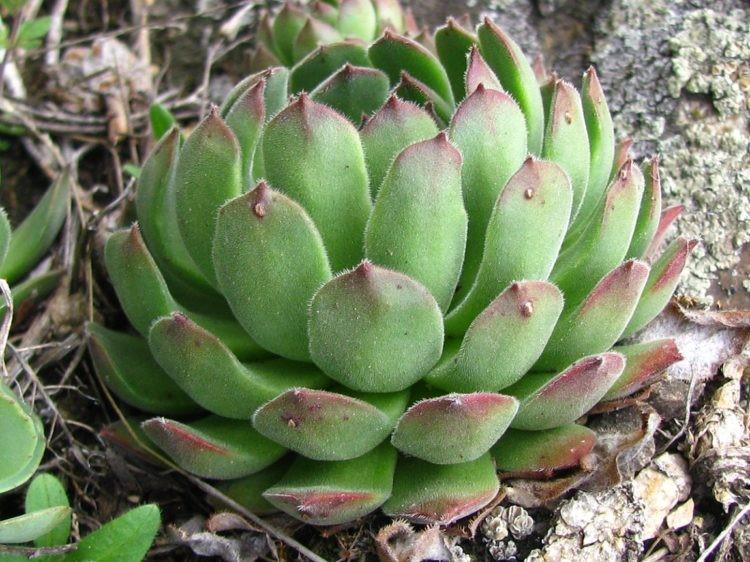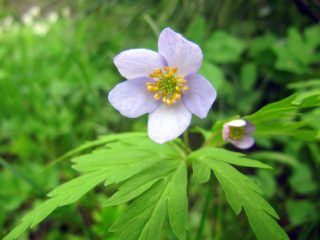Content
The photo and description of the stone rose contain the general characteristics of the plant, as well as characteristics of a specific variety. Varieties differ in rosette diameter, color, shape of leaf blades, height of peduncles, and color of petals. Some species have an atypical shape, but generally the rock rose produces spherical rosettes. Descriptions of different representatives with photos can be found in this article.
Why was the stone rose called that?
Stone rose is a perennial succulent plant belonging to the Crasulaceae family. It is found in Russia and neighboring countries, in Europe, as well as in Turkey. Has several names:
- young;
- tenacious;
- hare cabbage.
Moreover, in Latin the plant is usually denoted by the word “Sempervívum”, which literally translates as “always alive”. This is due to the characteristics of the flower - it is very unpretentious, settles on rocky, depleted soils, and adapts well to drought.
The word “rejuvenated” is also understandable in this context.Despite difficult conditions, the plant survives and always retains the color of its leaves, i.e. is evergreen. As for the name “stone rose”, it is associated with the characteristic shape of the leaf rosette. It looks like a petrified rose with "carved" pointed edges.

The name “stone rose” well reflects the appearance of the plant
Description of the stone rose
The plant is a succulent, and therefore has dense, fleshy leaves of an ovoid or other shape. Each of them has a pointed tip, which is usually purple or reddish in color. The main part of the leaf blade is light or dark green, as well as reddish.
The plant is a ground cover, the foliage grows in rosettes reaching a width of 5-7 cm. They are flattened at the top, so the height is small. But the flower stalks can rise up to 25-30 cm. The flowers are small, organized into panicles or thyroid inflorescences. The color is varied, depending on the variety of the young - it can be yellow, lilac, purple, violet. Flowering occurs mainly in the second half of summer.
Varieties of rock rose
There are quite a few varieties of juveniles suitable for open ground. Descriptions of the most beautiful ones are presented below.
Roofing rejuvenated
In nature, representatives of the roofing variety (Sempervivum tectorum) are found in the temperate climate of Europe, Central Russia, and also in Turkey. The rosettes reach a diameter of 5-15 cm, the shape is spherical, sometimes slightly flattened. The flowering period begins in July and lasts up to 45 days until the end of August.
The leaves of this young variety are very large, fleshy, with pointed tips of a reddish color. Peduncles with pubescence, well leafed, low (up to 6 cm). The color of the flowers is rich purple, star-shaped.They are quite small (up to 2 cm), but they look beautiful against the background of graceful leaves.

The tips of the leaves are purple-red and look very beautiful.
Rejuvenated cobwebby
Another interesting variety is the young cobweb (Sempervivum arachnoideum), which grows in nature mainly in the mountainous regions of European countries. The peduncles are tall, rise 25-30 cm, and are abundantly covered with leaves. A characteristic feature is that a kind of cobweb stretches between the pointed tips.
The rosettes of leaves of this young variety are small, up to 3-4 cm in diameter. The shape is spherical, often flattened. The leaf blades are oblong, slightly curved at the tips. The color is light green, with a reddish-brown tint visible at the edges.
The Russian was rejuvenated
The description and photo of the plant young Russian (Sempervivum ruthenicum) speaks of very tall peduncles - they reach 35 cm. The inflorescences are corymbose type, also quite large (7-10 cm wide). The flowers are yellow and appear in large numbers.

The rosette is not wide, so the young Russian looks compact
The leaf rosette of this variety is small, 5-6 cm in diameter. The leaf plates themselves are wedge-shaped, with typical points visible at the ends.
Mountain young
Mountain juvenile (Sempervivum montanum) grows mainly in the mountains at an altitude of 1.5-2 km above sea level. Produces tall stems (up to 18 cm) of rich red color. The rosettes are only 3 cm in diameter and smell of resin. The leaves are dark green, arranged alternately, with purple tips.Peduncles rise 5-8 cm, flowers are pink, up to 3.5 cm in diameter.

Mountain rose is not like most other varieties of rock rose
Rejuvenated Caucasian
The name of the Caucasian variety (Sempervivum caucasicum) accurately reflects the plant's habitat. It is found mainly in the North Caucasus. Flowering lasts only a month, from mid-July to the second ten days of August. The plant is evergreen, with leaf rosettes in the form of slightly flattened balls. They reach no more than 5 cm in diameter.
The leaves themselves are a rich green shade, and on the reverse side they are pinkish or slightly bluish. The plates are ovoid, reaching 3 cm in width. At the same time, the peduncles are very tall, up to 20 cm. They are covered with a noticeable layer of pubescence. The flowers of this variety are violet or lilac with a purple tint. They have an attractive star shape.

The Caucasian variety Juvenile is often found on rocky soils
Juvenile spherical
Sempervivum Globiferum is a small plant that grows up to 10 cm in height. The foliage is oblong, the rosette width is no more than 5 cm. Flowering begins in July and continues until August. The color of the petals is yellow with a green tint. The type of inflorescences is umbellate or in the form of corymbs. It is a winter-hardy crop, but needs well-lit places.

The spherical variety is characterized by rapid growth
Rejuvenated shoot-bearing
Young shoot (Sempervivum sobolifera) is a very unusual variety with a dense rosette of leaves growing upward. In appearance it resembles a cylinder, the color is light green, its diameter reaches 5-6 cm. The leaves themselves are oblong-pointed with reddish edges. If you look closely, you can see thick eyelashes.
Peduncles rise to a height of 20-25 cm.The flowers are organized into paniculate-type inflorescences, the diameter of which is up to 10 cm. The color is yellow and attractive.

The leaf rosette grows upward rather than wider
Young dwarf
The dwarf variety (Sempervivum pumelum) of a perennial plant is small in size. The leaf rosettes are light green with reddish edges, reaching no more than 6 cm in diameter. The shape of the leaf plates is lanceolate, the tips are sharp, although they can also be rounded.
The shoots are quite short, they are not even visible under the rosettes, so it seems that the foliage seems to be lying on the ground. Visually, such a stone rose really looks like a dwarf, so it can be used as a ground cover.
However, during flowering, shoots 15-20 cm high appear. These are peduncles on which lilac and burgundy flowers are formed. They are combined into paniculate or corymbose inflorescences. They smell quite pleasant, which is noticeable even from a distance.

The variety is called dwarf or short-growing
Marble rejuvenated
One of the most beautiful varieties of stone rose is marbled (Sempervivum marmoreum), found mainly in Western European countries. The shape of the rosette is regular, spherical, slightly flattened on top, 5-10 cm in diameter. The foliage is pubescent, the color is pure green or red. Each plate ends in a sharp tip.

The flowering period occurs in mid-summer and lasts 5-6 weeks.
Young offspring
The scion variety (Sempervivum marmoreum) produces spherical leaf rosettes of small diameter (within 6 cm).The color of the plates is light green, the tops with a characteristic point are colored in a reddish tint. The flowers are organized in corymbose-type inflorescences, colored pale yellow, and often greenish.

Flowering occurs in the second half of summer and lasts up to seven weeks.
Wulfen looked younger
Another beautiful species that is found in high mountain meadows is Wulfen (Sempervivum wulfenii). Produces small rosettes with light green smooth leaves. The tips are red-purple, contrasting with the overall appearance. Numerous cilia are located along the sharp edges. During flowering, a shoot 20-25 cm high is formed. Bright yellow inflorescences grow on it.

The Wulfena variety is distinguished by its bright color and attractive shape.
Calcareous young
A rather rare variety is limestone (Sempervivum calcareum). It has thin leaves with contrasting colors. At the base the plates are light green and bluish, and the edges are dark, making the plant look very impressive.

The leaves have an attractive shape and unusual color
Conclusion
Photos and descriptions of stone roses give a completely clear idea of each variety. It should be taken into account that a particular variety has its own growing characteristics. Plants adapt well even to poor soils, but may not withstand severe frosts. Therefore, when choosing a specific crop, the climatic features of the area should be taken into account.








